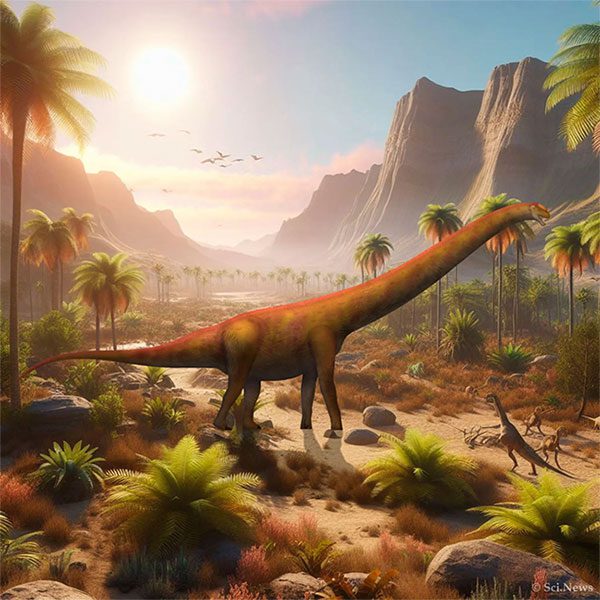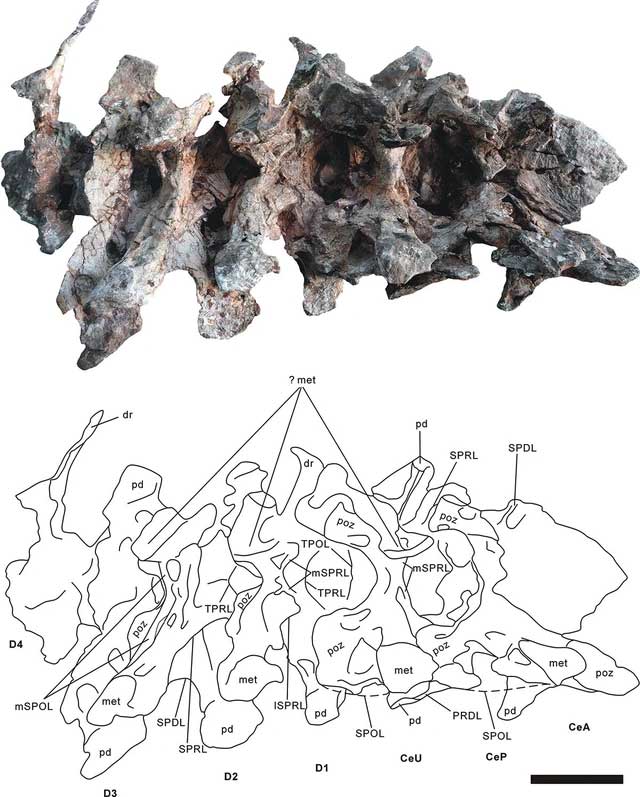Giant bones dating back approximately 66 to 72 million years have been identified as belonging to an entirely new species of creature.
The new creature has been named Jiangxititan ganzhouensis by paleontologists, a name that pays homage to the location where it was discovered: Nanxiong Formation in Ganzhou City, Jiangxi Province, China.

It is identified as a titanosaur, the largest group within the sauropod dinosaur lineage.
The fossils excavated in Jiangxi consist only of 7 cervical and anterior vertebrae. These findings have allowed a research team led by Dr. Jin-You Mo from the Guangxi Natural History Museum to determine its family tree, although the sample is too limited to accurately estimate its size. However, since it is a titanosaur, it would have weighed several tons when alive.

One of the fossil specimens – (Photo: HISTORICAL BIOLOGY).
Typically, titanosaurs found worldwide weigh around 30 tons, while some larger species can exceed 70 tons.
Further analysis reveals that this new creature belongs to a special branch called Lognkosauria—one of the largest branches within the titanosaur lineage. The name Lognkosauria derives from Greek, meaning “lord lizard.”
Lognkosauria is characterized by a robust body, wide ribcage, and large vertebrae, as described in the scientific journal Historical Biology. Naturally, it also exhibits the typical features of a sauropod, including large, heavy limbs, a long neck, and a long tail.
The preserved neural spines in the fossils have helped researchers classify the Jiangxi creature as a distinct species, with many unique traits compared to other titanosaurs previously excavated in Asia.
According to Sci-News, the Nanxiong Formation where it “rests” is a vast expanse of ancient Cretaceous rock composed of red mudstone, sandstone, and is a renowned treasure trove of paleontological finds.
In recent years, this formation has presented the modern world with a series of valuable specimens of extinct creatures, including theropod dinosaurs, bird-like dinosaurs, ancient crocodiles, ancient turtles, and peculiar mammals…
Prior to Jiangxititan ganzhouensis, another sauropod species named Gannansaurus sinensis had also been discovered in this area.




















































